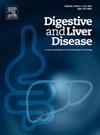肝移植后HHV-8感染的免疫动力学:从病毒血症到KICS和卡波西肉瘤
IF 3.8
3区 医学
Q1 GASTROENTEROLOGY & HEPATOLOGY
引用次数: 0
摘要
由于慢性免疫抑制,肝移植受者易受潜伏病毒再激活的影响。其中,人类疱疹病毒8 (HHV-8)具有重大的临床威胁,特别是在血清阳性率仍然很高的流行地区。移植后HHV-8再激活可能导致一系列表现,从无症状病毒血症到卡波西氏肉瘤(KS),更严重的是卡波西氏肉瘤炎性细胞因子综合征(KICS),这是一种与高发病率和死亡率相关的疾病。在我们的单中心回顾性研究中,我们检查了14例hhv -8感染的移植患者,包括几例肝移植受者,并将他们分为三个不同的临床组:无症状病毒血症(n=5),经典或播散性KS (n=4)和KICS (n=5)。进行全面的免疫病毒学分析,包括纵向监测HHV-8病毒载量,特异性t细胞反应和细胞因子面板。我们的发现强调了免疫控制在肝移植受者中的重要性。无症状病毒血症患者,包括肝受体,表现出强大的hhv -8特异性t细胞反应和保留的t细胞功能,以及受控的细胞因子水平。相比之下,那些进展为KS,特别是KICS的患者表现出t细胞衰竭增加(特别是PD-1表达升高),hhv -8特异性反应性降低,炎症细胞因子(IL-6, IL-10, IFN-α)显著升高。重要的是,所有KICS病例都接受了肝移植,并且在疾病进展之前,HHV-8病毒血症升高和炎症反应失调。这些结果表明,在HHV-8原发感染或再激活的情况下,肝移植受者对免疫逃逸和细胞因子驱动的病理具有独特的脆弱性。这项研究强调了对HHV-8感染的肝移植患者进行早期和量身定制的病毒免疫监测的必要性。通过早期识别免疫衰竭标志物和细胞因子谱,临床医生可以通过及时的免疫抑制调节和抗病毒或免疫调节干预来改善患者的预后。需要进一步的研究来确定对这一高危人群进行监测和干预的最佳策略。本文章由计算机程序翻译,如有差异,请以英文原文为准。
Immune Dynamics of HHV-8 Infection After Liver Transplantation: From Viremia to KICS and Kaposi’s Sarcoma
Liver transplant recipients are susceptible to the reactivation of latent viruses due to chronic immunosuppression. Among these, human herpesvirus 8 (HHV-8) poses a significant clinical threat, particularly in endemic areas, where seroprevalence remains high. Post-transplant HHV-8 reactivation may lead to a spectrum of manifestations ranging from asymptomatic viremia to Kaposi’s Sarcoma (KS) and, more severely, Kaposi’s Sarcoma Inflammatory Cytokine Syndrome (KICS), a condition associated with high morbidity and mortality. In our single-centre retrospective study, we examined 14 HHV-8-infected transplant patients, including several liver transplant recipients, and categorized them into three distinct clinical groups: asymptomatic viremia (n=5), classic or disseminated KS (n=4), and KICS (n=5). Comprehensive immuno-virological profiling was performed, including longitudinal monitoring of HHV-8 viral load, Specific T-cell response, and cytokine panels. Our findings underscore the critical importance of immune control in liver transplant recipients. Patients with asymptomatic viremia, including liver recipients, exhibited robust HHV-8-specific T-cell responses and preserved T-cell function, along with controlled cytokine levels. In contrast, those progressing to KS and especially KICS showed increasing T-cell exhaustion (notably elevated PD-1 expression), reduced HHV-8-specific reactivity, and marked elevations in inflammatory cytokines (IL-6, IL-10, IFN-α). Importantly, all KICS cases had undergone liver transplantation, and disease progression was preceded by rising HHV-8 viremia and a dysregulated inflammatory response. These results point to a unique vulnerability of liver transplant recipients to immune escape and cytokine-driven pathology in the context of HHV-8 primary infection or reactivation. This study highlights the need for early and tailored viro-immunological monitoring in liver transplant patients with HHV-8 infection. By identifying immune exhaustion markers and cytokine profiles early, clinicians may improve patient outcomes through timely immunosuppression adjustment and antiviral or immunomodulatory interventions. Further research is needed to define optimal strategies for surveillance and intervention in this high-risk population.
求助全文
通过发布文献求助,成功后即可免费获取论文全文。
去求助
来源期刊

Digestive and Liver Disease
医学-胃肠肝病学
CiteScore
6.10
自引率
2.20%
发文量
632
审稿时长
19 days
期刊介绍:
Digestive and Liver Disease is an international journal of Gastroenterology and Hepatology. It is the official journal of Italian Association for the Study of the Liver (AISF); Italian Association for the Study of the Pancreas (AISP); Italian Association for Digestive Endoscopy (SIED); Italian Association for Hospital Gastroenterologists and Digestive Endoscopists (AIGO); Italian Society of Gastroenterology (SIGE); Italian Society of Pediatric Gastroenterology and Hepatology (SIGENP) and Italian Group for the Study of Inflammatory Bowel Disease (IG-IBD).
Digestive and Liver Disease publishes papers on basic and clinical research in the field of gastroenterology and hepatology.
Contributions consist of:
Original Papers
Correspondence to the Editor
Editorials, Reviews and Special Articles
Progress Reports
Image of the Month
Congress Proceedings
Symposia and Mini-symposia.
 求助内容:
求助内容: 应助结果提醒方式:
应助结果提醒方式:


